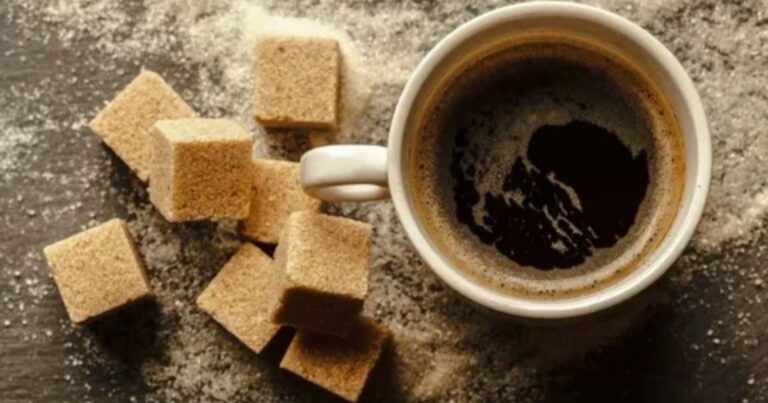Unlock the Secrets of Medium Roast Coffee: A Beginner’s Guide to the Perfect Brew
Imagine waking up to the perfect cup of coffee—smooth, rich, and full of flavor. That’s exactly what medium roast coffee delivers. If you’ve been wondering which roast strikes the right balance, medium roast might just be your answer.
Medium roast coffee is not too bold or too mild. It brings out the best of the beans, offering a smooth and satisfying taste. It’s ideal for those who want a flavorful cup without the overwhelming bitterness of darker roasts.
Whether you’re just starting your coffee journey or are looking for something new, medium roast coffee
What is Medium Roast Coffee?
Medium roast coffee refers to beans that have been roasted to a medium-brown color. The roasting process typically reaches an internal temperature of about 410°F to 428°F. At this stage, the coffee beans undergo the Maillard reaction, which enhances their complex flavors and gives the beans a rich brown color.

Unlike light roasts, medium roast coffee beans undergo a longer roasting process, which leads to the development of deeper flavors without losing the distinctive characteristics of the coffee origin. This roast style retains a balance of natural flavors while incorporating the toasty, caramelized notes from the roasting process.
Medium roasts also have a slight oil sheen on the surface of the beans, though not as much as dark roasts, which is a result of the oils that are released during the roasting process.
A key feature of medium roast coffee is its balance between acidity and body. Light roasts often have a bright, acidic flavor, while dark roasts can be bitter or smoky. Medium roasts, on the other hand, have a smooth, well-rounded flavor that many find pleasing and approachable.
Why Choose Medium Roast Coffee?
Medium-roast coffee has become a staple for coffee drinkers around the world because it offers a balanced experience that appeals to many tastes. If you enjoy the complex flavors of lighter roasts but find them too acidic or intense, medium roasts provide a smoother, less acidic option.
The medium roast also preserves the coffee’s original flavors, allowing you to appreciate the subtle nuances specific to the bean’s region of origin.
Research has shown that medium roast coffee contains higher levels of certain beneficial compounds, such as antioxidants and polyphenols, compared to darker roasts. These antioxidants are believed to help reduce oxidative stress in the body, which can contribute to chronic diseases and aging.
Medium roasts coffee also retain more of the natural flavor profile of the coffee beans, highlighting notes like caramel, chocolate, or even hints of fruity or floral flavors, depending on the region.
One of the main reasons people opt for medium roast coffee is its balanced caffeine content. A medium roast coffee provides a moderate caffeine boost without the intense jolt of energy that dark roasts often provide.
Studies suggest that medium roast coffee has a slightly higher concentration of caffeine compared to darker roasts because roasting reduces the caffeine content slightly, although the effect is minimal.
How to Brew the Perfect Medium Roast Coffee
Brewing medium roast correctly is essential to fully experience its complex flavors. The right brewing method, grind size, water temperature, and brewing time can make a significant difference in taste.

Grind Size Matters:
The grind size is crucial to the extraction process. For medium roast coffee, a medium grind is recommended, similar to sea salt in texture. This allows for a balanced extraction, where the flavors are properly developed, but the coffee doesn’t become over-extracted (which can lead to bitterness).
If you’re using an espresso machine, you will need a finer grind, but for methods like French press, a coarser grind will work best.
Water Temperature:
Water temperature plays a key role in extracting the right flavors from your coffee. For medium roast coffee, the optimal water temperature is between 195°F and 205°F (90°C – 96°C). Water that is too hot can extract undesirable flavors, while water that is too cold will under-extract the coffee, resulting in a weak, flat taste. Investing in a thermometer for your kettle can help ensure precision.
Brewing Time:
Brewing time affects the balance of flavors extracted from the coffee grounds. For drip or pour-over coffee, aim for a brewing time of 4-5 minutes, which will allow the coffee to bloom and fully develop its flavors. For methods like French press, aim for 3-4 minutes of steeping time.
Extraction times are typically around 25-30 seconds if you’re using an espresso machine. Experimenting with brewing times will help you tailor the taste to your personal preference.
The Health Benefits of Medium Roast Coffee
Medium roast coffee isn’t just delicious—it also offers numerous health benefits, many of which are tied to the roasting process. As coffee beans roast, they release various bioactive compounds, including antioxidants that have a protective effect on your cells.

One of the most well-known antioxidants in coffee is chlorogenic acid. Studies have shown that chlorogenic acids, which are present in higher amounts in medium roast coffee compared to dark roasts, can help reduce inflammation and support cardiovascular health.
These compounds have been linked to improved blood circulation, reduced blood pressure, and a reduced risk of chronic conditions such as heart disease.
Medium roast coffee also has a lower acidity compared to light roasts, which makes it gentler on the stomach. For individuals who are sensitive to acidic foods and drinks, medium roast coffee is a more digestible option. It offers the same flavorful experience without the discomfort that can be associated with higher-acid coffees.
Moreover, recent research has suggested that moderate coffee consumption may be associated with a lower risk of developing neurodegenerative diseases, such as Parkinson’s and Alzheimer’s. The antioxidants and anti-inflammatory compounds found in coffee are believed to have neuroprotective properties.
Where to Find the Best Medium Roast Coffee
The quality of your medium roast coffee is heavily influenced by the beans themselves, so it’s essential to choose wisely. Look for beans that have been freshly roasted and sourced from trusted producers. Specialty coffee roasters are a great place to find high-quality beans with a well-balanced medium roast.
When purchasing medium roast coffee, it’s important to know the origin of the beans. Coffee-growing regions like Colombia, Guatemala, Ethiopia, and Kenya are known for producing high-quality beans that excel in medium roasts.
Beans from these regions often have unique flavor profiles that shine through in a medium roast, with notes of bright fruit, floral undertones, and rich chocolatey flavors.
As with any coffee, freshness is key. Always check the roast date and try to brew your coffee within 2-3 weeks of roasting for the best flavor. Additionally, consider buying whole beans and grinding them just before brewing to preserve the essential oils and aromas that contribute to a great cup of coffee.
Conclusion
Medium roast coffee offers a perfect balance of flavor, aroma, and health benefits. Its smooth, well-rounded profile makes it ideal for a variety of coffee drinkers, whether for a gentle morning cup or an afternoon pick-me-up. With the right brewing techniques, you can unlock its full potential and enjoy a rich, satisfying cup every time.
By choosing high-quality beans, mastering the right grind, and paying attention to brewing methods, you can experience the best of medium roast coffee. With its delicious taste and health benefits, it truly offers the best of both worlds. It’s the perfect choice for anyone seeking rich flavor and a smooth finish.
Medium roast coffee isn’t too intense, but still packs a satisfying punch of flavor. It’s easy to brew and even easier to love. Whether it’s your first cup or your fiftieth, medium roast coffee always hits the mark and offers something for every coffee lover. Give it a try—you may find your new favorite brew.
Don’t miss out on the joys of medium roast coffee. Brew it right, and you’ll unlock a cup that’s rich, flavorful, and perfectly balanced every time.
FAQs
What is Medium Roast Coffee?
Medium roast coffee has a darker brown color compared to light roast. It offers a balanced flavor, with a rich taste that isn’t too bitter. The beans are roasted to bring out a fuller aroma and body.
Is Medium Roast Coffee Less Strong?
Medium roast coffee isn’t necessarily less strong. It has a shorter roast time, so it retains slightly more caffeine than darker roasts. The flavor profile is balanced, not too intense or mild.
Should I Drink Medium or Dark Roast Coffee?
Dark roast coffee has the lowest acidity compared to light and medium roasts. It contains fewer compounds that trigger acid production in the stomach. Choosing different brewing methods can further reduce acidity.
Is Arabica Coffee Medium Roast?
Arabica coffee is generally considered a medium roast by default. This roast level balances the bean’s natural flavor and acidity. It is neither too light nor too dark, offering a smooth and well-rounded taste.







